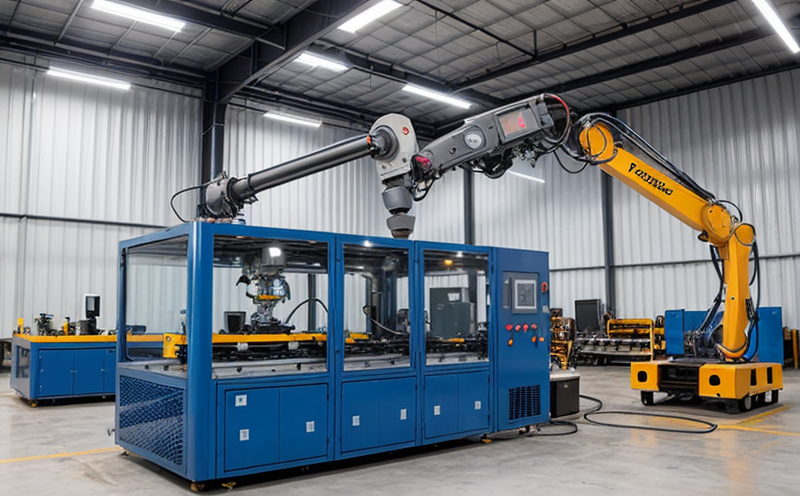ISO 9282 Robot Reliability and Durability Testing
The ISO 9282 standard is a cornerstone in the evaluation of robotic systems with respect to their reliability and durability. This testing ensures that industrial robots can withstand operational demands without failure, thereby enhancing safety, efficiency, and productivity within manufacturing environments.
Industrial robotics are integral components of modern manufacturing processes. They contribute significantly by performing repetitive tasks accurately and consistently, often in hazardous or high-demand conditions where human involvement would be impractical or unsafe. The ISO 9282 standard focuses on the mechanical aspects of robot reliability, which include resistance to wear, fatigue, and other forms of degradation that can lead to failure.
The testing protocol outlined by ISO 9282 involves a series of defined test cases aimed at simulating real-world operational conditions. These tests are designed to push the robotic system to its limits in terms of load capacity, endurance under different environmental factors, and response time during critical tasks. Compliance with this standard not only ensures that robots meet performance expectations but also supports broader quality management systems within industrial settings.
One key aspect of ISO 9282 testing is understanding the specific requirements for specimen preparation. This involves selecting appropriate materials and configurations that accurately reflect the operational environment in which the robot will be used. For instance, if a robot operates in an abrasive or corrosive atmosphere, its components must undergo tests designed to mimic such conditions.
Instrumentation plays a crucial role in ISO 9282 testing. Advanced sensors and data acquisition systems are utilized to monitor critical parameters during test runs. Parameters might include temperature changes within the motor housing, vibrations transmitted through joints, or electrical current draw under various loads. By continuously gathering these metrics, testers can identify potential weaknesses early on.
The results of ISO 9282 testing provide detailed reports that serve as essential references for both manufacturers and end-users. These reports detail how well each robot performed across all tested parameters, highlighting any areas where improvements could be made. Such insights are invaluable for R&D departments seeking to enhance product offerings while maintaining or exceeding industry standards.
Compliance with ISO 9282 is increasingly becoming a prerequisite in competitive markets due to its emphasis on safety and reliability. Many industries rely heavily on robotic systems, making adherence to this standard crucial for maintaining market relevance and ensuring robust performance even under challenging circumstances.
Industry Applications
| Application Area | Description |
|---|---|
| Automotive Manufacturing | Ensures robots used in precision welding and assembly lines operate reliably over extended periods. |
| Pharmaceutical Packaging | Verifies packaging robots maintain accuracy and consistency through rigorous testing cycles. |
| Electronics Assembly | Achieves consistent quality control by ensuring that robotic arms used in delicate component placement are robust enough to handle frequent use. |
Customer Impact and Satisfaction
- Enhances product quality by ensuring consistent performance across all units produced.
- Reduces downtime due to unexpected failures, thereby improving overall efficiency.
- Increases customer trust through proven reliability of robotic systems.
International Acceptance and Recognition
- The ISO 9282 standard is recognized globally for its stringent requirements on robot reliability and durability.
- Compliance with this standard is a key factor in securing international certifications necessary for entering global markets.





